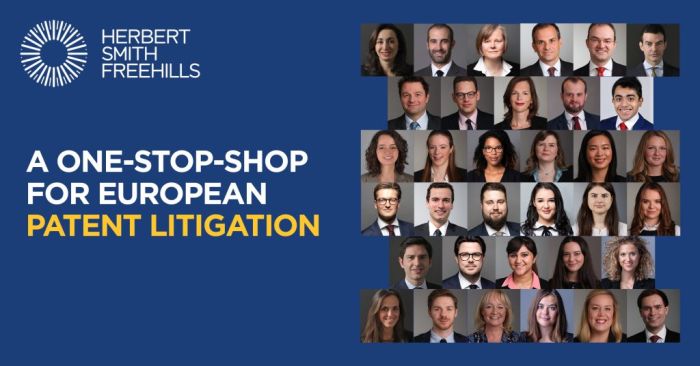Six months into the new European patent and unitary patent litigation system – the Unified Patent Court (UPC) – and the stage has been set for a positive 2024. The UPC is proving popular with patentees bringing infringement actions as well as those parties seeking revocations, but with the balance so far falling in favour of the infringement actions to a greater extent than many had expected. With no full trials yet, hearings on interim measures have been swift, with decisions equally so in most cases. Preliminary injunctions have been ordered, breached and enforced, as well as appealed; procedure has been tested and interpreted. In short, the UPC has got off to a roaring start, with several of the key issues initially concerning practitioners having been resolved, whilst new ones have of course arisen.
Whilst there is much to report on the decisions and developing procedure of the UPC and encouragingly popular unitary patent (UP) – see "The UPC & UP in 2023" below – what should we be expecting in 2024?
What to look out for in 2024
- The UPC as an additional jurisdiction for on-going multi-national patent disputes plus uptake for smaller previously more locally focused disputes: The pattern that has so far emerged in the UPC appears to be one of its incorporation into major worldwide patent disputes and the next of the many jurisdictions in which to fight your battles. Many of the parties facing each other in the UPC will be familiar names to those monitoring already on-going multi-jurisdictional patent disputes. Whilst this may be true of the very high value disputes, there have also been many smaller businesses using the UPC to achieve their aims. The cases that have involved seizure of evidence or clamping down on infringements being sold or demo-ed at trade fairs, fall into this category. The Munich and other German local division courts have been receiving these applications in the same way that they are already received by the equivalent German local national courts.
- New (ab initio) actions entering the UPC fold: So, for 2024, we might expect more of these two extremes mentioned above, but also more ab initio actions commencing in the UPC in tandem with other patent courts in the non-participating jurisdictions around Europe, such as the UK, Spain, Poland or Ireland say.
- New joiners? Ireland may not be a UPC outsider for long. It has recently announced plans to include a question on joining the UPC in the next referendum it holds in 2024. The UPC states currently comprise: Austria, Belgium, Bulgaria, Denmark, Estonia, Finland, France, Germany, Italy, Latvia, Lithuania, Luxembourg, Malta, Netherlands, Portugal, Slovenia, and Sweden. What of the other potential UPC EU states? Cyprus, Czech Republic, Greece, Hungary, Ireland, Romania, and Slovakia have signed the UPC Agreement but have not yet fully ratified it. Ireland looks like a possible joiner in 2024 but will the seeming success of the new system attract others into the fold in 2024?
- New Milan seat for Central Division The Milan Central Division court will be opening its doors in 2024. It will handle revocation and DNI cases relating to IPC classification A – Human necessities including pharmaceuticals, currently under the interim auspices of the Paris seat (although the new Milan seat will not deal with cases involving SPCs which will stay with Paris).
- Resolution on transparency? The UPC Court of Appeal will determine whether UPC case pleadings should be accessible to third parties. There is a an appeal from a decision of the Nordic-Baltic Regional Division court on this point where the court concluded that such access should be allowed, in contrast to two earlier decisions of the Munich Central Division on applications by anonymous third parties where it was held that they should not. The UPC Court of Appeal has confirmed that the appeal will have suspensive effect on the order to grant access to the third party.
- Bifurcation Several infringement cases proceeding in the Local Division courts of the UPC currently have related revocation actions in the Central Division running in parallel (see more on these below). This year we should see how the provisions relating to consolidation, stay and bifurcation are put into practice by the Local and Central Division courts and whether a plurality of actions is favoured or like the Dusseldorf court in MyStromer in November (case 260/2023) the courts will see the joint hearing of infringement and nullity counterclaims as more efficient and whether this will extend to their combination with independent revocation actions. Indeed revocation actions can lead to a stay of infringement proceedings in certain circumstances – the ultimate bifurcation.
- More Court of Appeal decisions setting the tone for practice and procedure The UPC Court of Appeal has already dealt with several procedural appeals in the OPPO and Ocado v Autostore proceedings, as well as the appeal in Sanofi v Amgen in relation to time for service of defences where annexes were not served with the statement of claim (see section on Service below). Most significantly, the appeal by NanoString of the PI awarded by the Munich Local Division in the 10x Genomics proceedings was heard on 18 December 2023 and a decision on this is eagerly awaited, including on issues such as the assessment to be made by the court when considering the grant of a PI – including the role of any delay (and its interpretation here where the PI was based on a unitary patent) and whether risk of financial damage alone (to a non-practising entity (NPE) which was involved here) was sufficient to found a PI as the Local Division court had held it was.
Taking account of the UPC in your 2024 patent strategy
The UPC is here to stay. Even this time last year, many doubted that it could commence in 2023 and that it would be widely used. The UPC appears to have proved them wrong. Although only 17 EU states are taking part in the new system, a preliminary injunction has already been awarded across all these states, even if it is currently under appeal. The resolution of the UPC to provide swift proceedings and decision is to be applauded and may turn out to be a major factor in the court's increasing success in 2024. Of course if the numbers of actions increase so too will the burden on the court's administrative system and its judiciary which may slow the progress of proceedings. With this swiftness of action comes the severe time limitations on defendants for the preparation of a defence once "surprised" by a UPC action. Careful preparation, including the use of protective letters, is to be recommended in areas where there are perceived risks of patentee enforcement therefore.
The UPC & UP in 2023
- UPC applications: At the end of December 2023, the UPC issued a retrospective news release highlighting the 160 applications it had received in the 6 months since its commencement in June. As will have become obvious to those who have been following the new court's progress closely, German courts have dominated for applications and decision-making in the UPC local division, with the Paris, Milan and The Hague local division courts and the Nordic Baltic regional division court getting a look-in, as well as one case each for Brussels, Vienna and Helsinki. In contrast Paris leads in central division actions with Munich trailing, although there is much less choice of jurisdiction for revocation actions which must go to the central division court assigned to their (first listed) IPC classification. There has also been one Declaration of non-infringement action in the Paris central division. The UPC counts counterclaims as separate actions, as well as applications for provisional measures so this makes for a higher tally of cases than might be expected when one looks at the parties and the substance. In many jurisdictions these would each be counted as aspects of a single actions.
- Unitary patents (UPs): As we have previously reported, the EPO now has a webpage dedicated to UP stats – the "dashboard". This revealed that as at 4th January 2024, there were 16737 EPs registered with unitary effect (ie UPs) with 645 application pending, across a great variety of technological fields – the front runner being med tech (with 2022 UPs or 11.6% of all UPs). The first named patentees requesting unitary effect come from a broad range of nationalities, As at the same date the stats for the top six were: Germany 3309; US 2564; France 1247; Italy 914; China 893; UK 734.
- UPC orders and decisions in 2023 The new court
has, so far, been asked to deal with many issues of legal principle
and the interpretation and application of the UPC Agreement (UPCA)
and UPC Rules of Procedure (RoP), including the following (see also
our blog post on the first 4 months here):.
- Opt-out: The UPC confirmed that opting out once proceedings have been commenced in the UPC is ineffective – you cannot opt out of the UPC's jurisdiction once UPC proceedings have been initiated. Further, any attempt to withdraw an opt-out when a patent in the bundle has already been the subject of national proceedings, even before the UPC commenced, will also be ineffective – you cannot withdraw the opt-out in such a situation.
- Where to bring revocation proceedings The Paris Central Division confirmed that for revocation actions, the UPC Central Division seat with jurisdiction was that deemed to deal with the IPC classification of the first listed on the patent if more than one, so not at the choice of the applicant. The court also gave further confirmation of how to deal with multiple patents.
- Who filed first? Where the CMS is down as it was on day 1 of the UPC, the timing of the actual physical filing of an application is to be determinative rather than any subsequent timings appearing on the system. This was significant in relation to the applications involved as it means that a standalone revocation action which was filed first in time, in the Central Division, although on the same day as an infringement action filed in the Local Division, was correctly filed and did not need to be filed in the same Division as the infringement action, as would have been the case had the order of filing been reversed. The approach taken effectively achieved bifurcation of infringement and validity issues on day 1 of the UPC.
- Same patent, same parties? A wholly owned
subsidiary, its only officers/employees being also employees of the
parent company, and, inter alia, only being created in March 2023
has been held to be a different entity such that there was no need
to immediately consolidate these proceedings with another involving
the parent company, the same patent and the same other party. This
decision is significant as central revocation actions are likely to
be much quicker than infringement actions with counterclaims for
revocation, and so this may be a strategic approach that is
attractive to potential defendants, of course bearing in mind the
power of the Local Division court under Article 33(4).
In addition the UPC has dealt with
- Service: the deemed date of service where exhibits/appendices have are not served at the same time as the pleadings; who can be served for service to be effected (eg Chief Legal Officer or Director); what constitutes valid legal service in the alternative service option (service is usually via the UPC itself) and in what circumstances is it allowed; whether service of several defendants which are outside the jurisdiction can be effected by service of one within the jurisdiction of the UPC.
- Amending/adding to claims
- Preliminary measures – including PIs (ex parte and inter partes), seizure and protective letters; security, costs, requesting changes to the form of an injunction order, enforcement of PI including damages and fines for breach
- Damages: whether the UPC can make a determination of damages in an infringement case decided by a national court
- Stays pending EPO oppositions including the response of the EPO
- Judicial practice and handling of cases in the UPC
For more on the UPC and unitary patent in general – see our UPC & UP hub

How we can help Our fully integrated, market leading team, is on the ground in France, Germany, Italy and the UK and has decades of experience in running multi-jurisdictional patent litigation in respect of our clients' most valuable products, including experience in the jurisdictions which will inform the UPC's procedure in due course.
We are able to use legal, technical and strategic skills from across our whole European team to give you the best advice on your UPC or national matters, with the qualifications necessary to handle cases whether they are in the UPC or key national courts.
The new UPC court system has jurisdiction over EPs in all UPC participating EU member states (currently 17), but litigation will also need to continue in non-participating EPC states (including the UK and in the seven EU member states that have not yet ratified the UPC Agreement (three of which have declared an intention not to join at all) and in national courts of participating states in relation to EPs opted out of the UPC's jurisdiction.
So, as well as litigation in the UPC, the execution and management of multi-jurisdictional patent litigation, in which our team has unrivalled experience, is still be a key element of patent enforcement in Europe.
The content of this article is intended to provide a general guide to the subject matter. Specialist advice should be sought about your specific circumstances.










